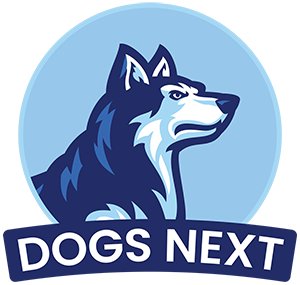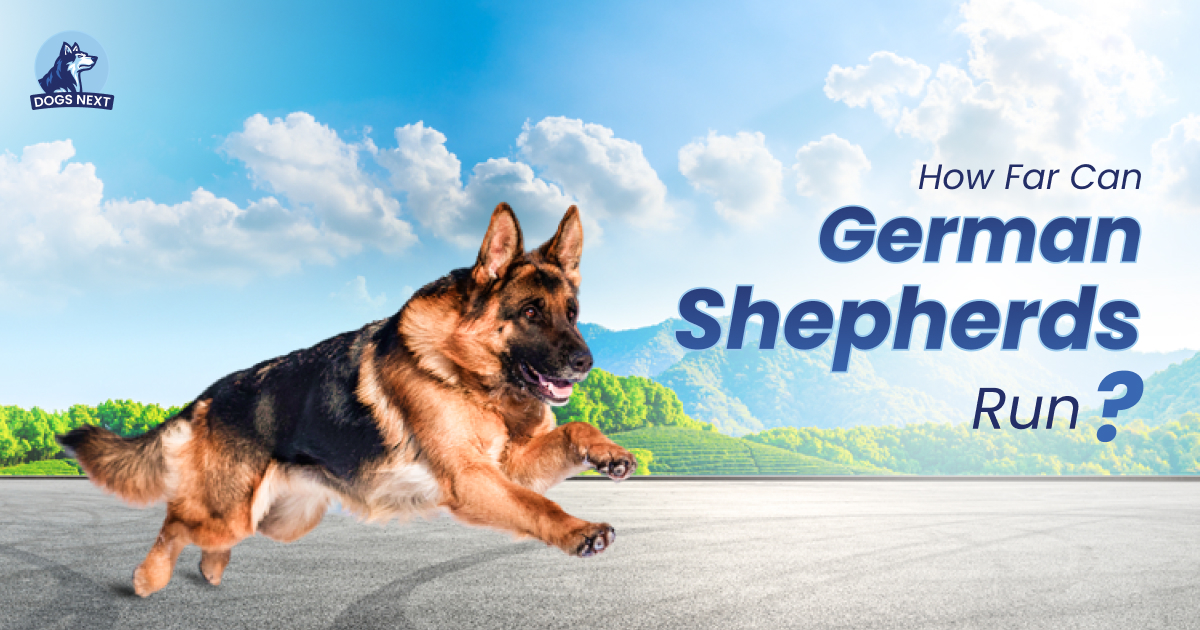German Shepherds are renowned for their remarkable physical abilities, including their impressive running prowess. If you’ve ever wondered how far these incredible dogs can run, you’ve come to the right place.
On average, a healthy and well-trained German Shepherd can run up to 5 to 20 miles (8 to 32 kilometers) without much difficulty. However, it’s important to note that individual variations exist, and some German Shepherds may have higher or lower endurance levels.
In this article, we will delve into the world of German Shepherds and explore their running capabilities. From their powerful muscles to their innate agility, German Shepherds possess the ideal traits for covering significant distances. Understanding their running potential can help you provide appropriate exercise and mental stimulation for your furry companion.
German Shepherd’s History and Running Distances
German Shepherds have a rich history as versatile working dogs with exceptional physical capabilities. Bred in Germany in the late 19th century, they were initially developed for herding purposes. Over time, their intelligence, strength, and endurance led them to excel in various roles, including search and rescue, police work, and competitive sports. These qualities also make them exceptional runners.
When it comes to running distances, German Shepherds can cover impressive ground. On average, a healthy adult German Shepherd can run between 5 to 20 miles (8 to 32 kilometers) without overexertion. However, it’s important to consider individual variations, as some German Shepherds may have higher endurance levels and can run even farther. Factors such as age, fitness level, and overall health also play a role in determining the optimal running distance for a specific dog.
Factors Affecting a German Shepherd’s Speed
Some factors can influence a German Shepherd’s speed and running abilities. Here are some key considerations:
| Factors | Description |
| Age | Younger German Shepherds generally have more energy and higher speed compared to older dogs. |
| Fitness Level | Well-conditioned German Shepherds with regular exercise tend to have better speed and endurance. |
| Health | A dog’s overall health, including joint health, cardiovascular health, and muscle condition, can impact its speed. |
| Genetics | Individual genetics play a role in determining a German Shepherd’s natural running ability. |
| Training | Proper training and exercise routines can enhance a dog’s speed and running efficiency. |
| Terrain | The type of terrain, such as flat surfaces or hilly terrains, can affect a German Shepherd’s speed and endurance. |
At What Age Should You Take a German Shepherd Out Running?
When it comes to introducing a German Shepherd to running, it’s crucial to consider their age and physical development. Puppies have developing bones and joints that are more susceptible to damage from excessive exercise. As a general guideline, it is recommended to wait until a German Shepherd is at least 12 to 18 months old before engaging them in prolonged running sessions.
During the early stages, focus on low-impact exercises such as short walks and playtime to build their stamina gradually. This allows their bones and joints to mature and strengthen, reducing the risk of injuries. Consulting with a veterinarian is essential to determine the appropriate age and intensity of exercise for your German Shepherd, considering their unique growth and development.
Remember, every German Shepherd is an individual, and their specific needs may vary. Observing their energy levels, monitoring for signs of fatigue or discomfort, and gradually increasing the duration and intensity of their exercise can help ensure a safe and enjoyable running experience for your loyal companion.
How Much Exercise Does a German Shepherd Need
German Shepherds are an active and energetic breed that requires a substantial amount of exercise to stay physically and mentally fit. Regular exercise helps prevent behavioral issues and promotes overall well-being. As a general guideline, adult German Shepherds should have at least 1-2 hours of exercise each day.
This can include activities such as brisk walks, jogging, playing fetch, or engaging in interactive games. However, keep in mind that individual needs may vary based on factors like age, health, and energy level. Monitoring your German Shepherd’s behavior and adjusting the exercise routine accordingly is crucial for ensuring they receive adequate physical stimulation.
How to Train Your German Shepherd to Run with You?
Training your German Shepherd to run with you can be an enjoyable and rewarding experience. Here are some steps to consider:
Build a Foundation
Start with basic obedience training to establish commands like “sit,” “stay,” and “heel.” This foundation will ensure better control during runs.
Gradual Introductions
Begin by introducing short, slow runs and gradually increase the duration and intensity over time. Allow your German Shepherd to adjust and build their endurance gradually.
Leash Training
Ensure your German Shepherd is comfortable walking and running on a leash. Practice loose-leash walking and reinforce positive behaviors.
Proper Gear
Invest in a well-fitted, comfortable harness or leash designed for running. This will provide better control and minimize strain on your dog’s neck.
Hydration and Rest
Carry water for both you and your German Shepherd during runs, and provide regular breaks for rest and hydration.
Safety First
Be mindful of your surroundings, choose appropriate running paths, and avoid extreme weather conditions that may be harmful to your dog’s health.
What Are the Signs You Are Overexerting Your German Shepherd?
While exercise is vital for a German Shepherd’s well-being, it’s crucial to watch for signs of overexertion. Pushing your dog beyond their limits can lead to injuries or health complications. Here are some signs that indicate your German Shepherd may be overexerted:
Excessive Panting: Heavy, prolonged panting even after rest can be a sign of overexertion.
Limping or Lameness: If your dog is favoring a leg or showing signs of discomfort while walking or running, it may indicate an injury or strain.
Sluggish Behavior: Unusual lethargy, reluctance to move, or a decrease in energy levels can be signs of exhaustion.
Excessive Drooling: Abnormal drooling, particularly in conjunction with other symptoms, may indicate your dog is pushing too hard.
Disorientation or Collapse: If your German Shepherd appears disoriented, dizzy, or collapses during or after exercise, seek immediate veterinary attention.
Listening to your German Shepherd’s cues, providing adequate rest and recovery time, and consulting with a veterinarian if you notice any concerning symptoms are essential to ensure their well-being while exercising. Remember, each dog is unique, and it’s important to tailor the exercise routine to their individual needs and capabilities.
Safety Tips to Consider When Training Your German Shepherd
When training your German Shepherd to run, it’s important to prioritize their safety. Here are some essential safety tips to consider:
Warm-up and Cool-down
Always start with a warm-up session to prepare your dog’s muscles and end with a cool-down to gradually decrease their heart rate.
Proper Leash and Equipment
Use a sturdy leash or harness that provides control without causing discomfort or restricting movement.
Hydration
Ensure your German Shepherd has access to fresh water before, during, and after the run to prevent dehydration.
Weather Conditions
Avoid running during extreme weather conditions, such as intense heat or extreme cold, as it can put your dog at risk. Opt for cooler times of the day during hot weather.
Check your dog’s paws regularly for any injuries or irritation. Consider using paw balms or protective boots to shield your paws from rough surfaces or extreme temperatures.
Traffic and Road Safety
Choose running routes away from heavy traffic areas, and always keep your German Shepherd on a leash to prevent accidents.
Signs of Heatstroke in a German Shepherd
Heatstroke can be life-threatening for a German Shepherd, especially during hot weather or intense exercise. It’s crucial to recognize the signs and take immediate action. Look out for the following symptoms of heatstroke:
Excessive Panting and Drooling: Rapid and excessive panting, along with excessive drooling, can be early signs of heatstroke.
Lethargy and Weakness: If your German Shepherd appears tired, weak, or unsteady on their feet, it may indicate heatstroke.
Bright Red Gums and Tongue: Heatstroke can cause the gums and tongue to turn bright red or even purple.
Vomiting or Diarrhea: Gastrointestinal distress, including vomiting or diarrhea, may occur during heatstroke.
Collapse or Seizures: In severe cases, a German Shepherd may collapse, have seizures, or lose consciousness.
If you suspect heatstroke, move your dog to a shaded, cool area immediately. Offer small sips of water, wet their body with cool water, and seek veterinary assistance as soon as possible.
Tips for Making Your Run with a German Shepherd Successful
To ensure a successful and enjoyable run with your German Shepherd, consider the following tips:
Start Gradually
Begin with shorter distances and slower paces, gradually increasing the duration and intensity of the run to avoid overexertion.
Positive Reinforcement
Use positive reinforcement techniques, such as treats and praise, to motivate and reward your German Shepherd during training sessions.
Stay Attentive
Be aware of your dog’s body language, energy levels, and overall well-being throughout the run. Adjust the pace or take breaks as needed.
Choose Suitable Surfaces
Opt for softer surfaces like grass or dirt trails to minimize impact on your dog’s joints and paws.
Maintain Consistency
Stick to a regular running schedule to help your German Shepherd develop endurance and improve their overall fitness.
Enjoy the Journey
Running with your German Shepherd should be a bonding experience. Take time to appreciate the moments together and have fun!
Frequently Asked Questions
Q: Can you go running with a German Shepherd?
Ans: Yes, German Shepherds make excellent running companions and enjoy physical activities.
Q: How much can a German Shepherd run in a day?
Ans: A healthy German Shepherd can run between 5 to 20 miles (8 to 32 kilometers) in a day, depending on factors like age and fitness level.
Q: How far can a German Shepherd walk?
Ans: German Shepherds can walk considerable distances. On average, they can comfortably walk for 3 to 5 miles (5 to 8 kilometers) in a day.
Q: How fast can German Shepherds run in kilometers?
Ans: German Shepherds can reach speeds of approximately 30 to 35 kilometers per hour (18 to 22 miles per hour) when running at their maximum capacity.
Q: How many miles should a German Shepherd walk a day?
Ans: It is recommended to provide German Shepherds with at least 1-2 hours of exercise per day, which can include walks covering 3 to 5 miles (5 to 8 kilometers).
Q: How far can a German Shepherd smell?
Ans: German Shepherds have an exceptional sense of smell. They can detect scents from up to 1-2 miles (1.6 to 3.2 kilometers) away, depending on various factors such as wind conditions and the specific scent they are tracking.
Conclusion
German Shepherds possess remarkable running capabilities that showcase their athleticism and endurance. With their rich history as versatile working dogs, they have been bred to cover significant distances with agility and strength. While the specific running distance may vary depending on factors such as age, fitness level, and overall health, a healthy adult German Shepherd can typically run between 5 to 10 miles without overexertion.
When training your German Shepherd to run, it is essential to prioritize their safety and well-being. Following safety tips, recognizing signs of heatstroke, and ensuring a successful run with proper preparation and training are crucial steps for both you and your loyal companion.
So, the next time you lace up your running shoes and head out with your German Shepherd, remember the incredible capabilities of these dogs. Their endurance and love for physical activities make them ideal running partners. Embrace the journey, enjoy the bond, and cherish the moments shared as you witness firsthand just how far a German Shepherd can run.

I’m David, an expert contributor and writer, with two furry friends of my own, I know the challenges of raising and caring for dogs. From training to nutrition and health, my goal is to provide valuable insights and advice to help create strong bonds and happy, healthy lives. Find me in Twitter.




